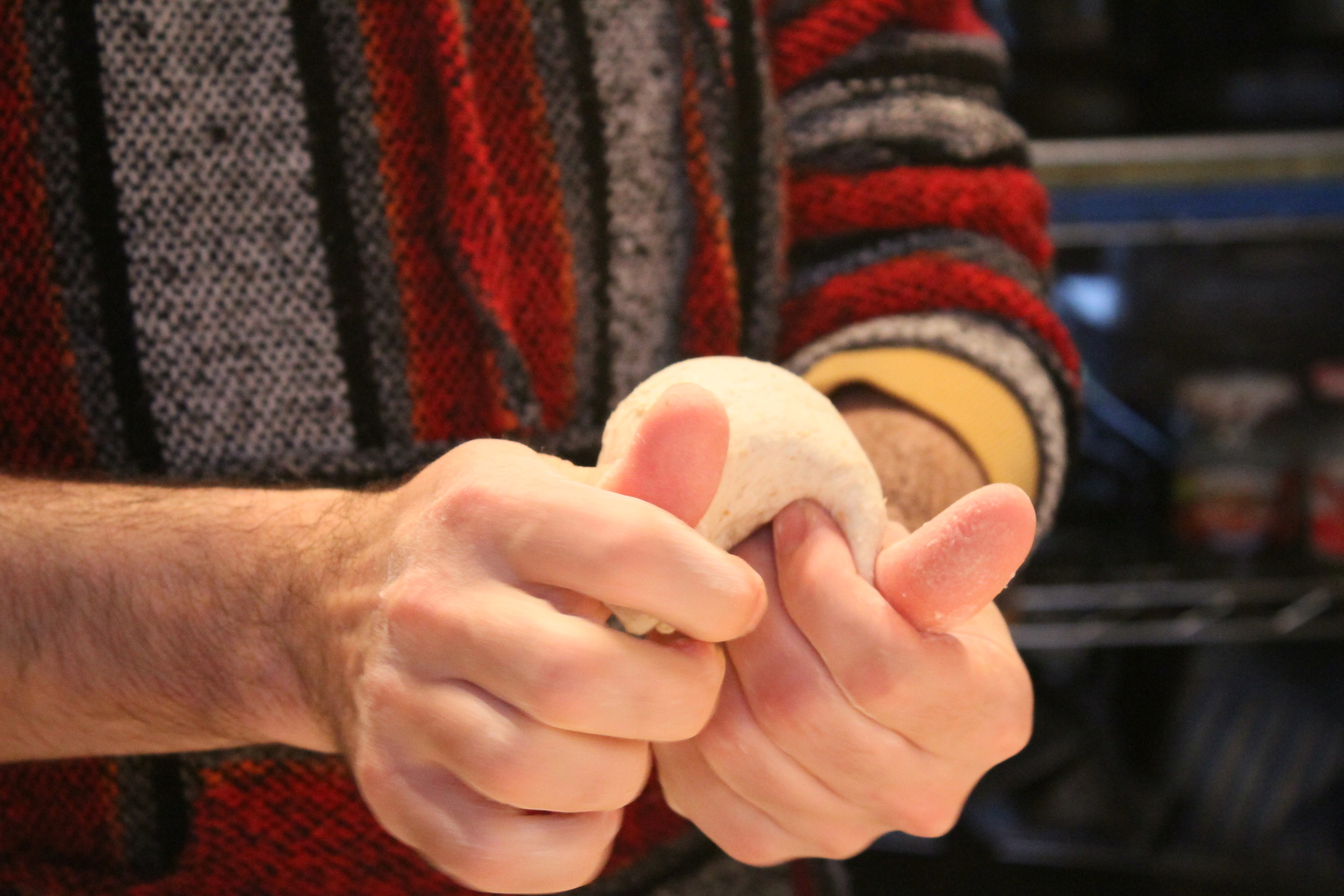As the winter lingers and the snow continues to blanket this usually temperate part f the country, we have been baking bread. We've been experimenting with the 18-hour bread recipe we posted last month, adding things like whole wheat, flax seed, dried milk, and vital wheat gluten.
Now I know wheat gluten has been getting a bad rap for a while, allegedly the cause of a variety of ailments from abdominal bloating to migraines to chronic fatigue. So, I'm going to take a moment here to discuss gluten and what it does for bread.
Essentially, gluten is the part of the grain that contains the protein. Seitan is made from wheat gluten and is a dietary stable in cultures that adhere to vegetarianism. It's primarily here in the West that gluten is considered something to be avoided. Mostly, we associate it with Celiac Disease, an auto-immune disorder that inhibits the absorption of vitamins - including but not limited to gluten. And so many of us avoid gluten in the name of good health.
Good dough technique
Which is unfortunate, because adding a bit of vital wheat gluten to your bread will transform it just as significantly as the slow rise and steam baking we discussed in January's post. There are a couple of things you need to get your bread dough to rise. Yeast, sugar, oxygen, and warmth are what most of us use. While that will indeed result in a nice rise, what you need to get a really voluminous rise out of your dough is a bit of structure. And this is where gluten comes in.
It really is a superior binding agent. And, if you work your dough by hand, what you are doing is binding the gluten and building structure into your dough. When you add vital wheat gluten to your dough, the proteins contribute to the forming of arc structures in the dough which creates greater volume. What you really need to make superior bread is gluten and time.
Building structure
So, take your basic bread recipe and add one tablespoon of vital wheat gluten for every three cups of flour. Knead the dough together and set it aside to rise as usual. Your dough will more than double. In our recipe, over the course of a slow 8-hour rise, it quadrupled.
Before the second rise
Ready for the oven
This alters the texture of the finished loaf as well, creating a bread that is both less dense and more chewy than typical home-made bread.
Steam-bake it in cast iron, as usual
We thought this would make for good dinner rolls, but our second rise quadrupled as well, leaving us with a dozen lovely little boule-style loaves just right for two.
Mini-boule for two





